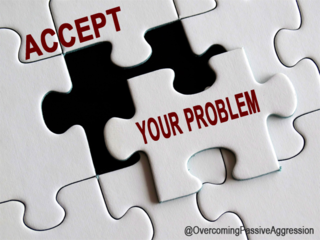Stress
Problem Solving Your Stress Away
Helpful mnemonics help kids and adults move forward.
Posted May 30, 2020

Transitions and a new normal make us think about problem-solving, a phrase that has different meanings. Sudden adaptation. Brainstormed options. Or, as I inserted into a career exercise for clients, "being routinely curious and chasing answers."
Some people solve problems more than others. Facing perfection, dread, or overwhelm, many procrastinate. Watching problems get created or fixed as part of what’s modeled to you in childhood, plays a role, for sure.
In sessions in my work as a therapist, children shared the DeBug steps they learned at school. So spot on, I began using these with clients of all ages, and even put the mnemonic into the text of Overcoming Passive-Aggression (2016).1 It’s a detailed take on the colloquial “pick your battles” cliche, and you can implement the DeBug approach with: Do ignore; Exit or move away; Be friendly; Use firm language; and Get help. 2
If children or adults, jump straight to that last step—triangulating another person in to solve something they probably could with a bit of effort and good communication—they miss out on the confidence that problem solving adds to one’s life skills.
When overwhelmed, it’s also too easy to think that there isn’t a solution out there. Indeed, there usually is. Accept that you can figure it out, on your own perhaps, but if you must seek help, enlist someone with objectivity, not reactivity. This includes a therapist or coach. The mnemonic of ACCEPT that I developed can guide you:
Address the specific problem, not your anger or frustrations when situations arise. “When people argue, emotions cloud thinking, and the focus shifts from problem resolution to attack,” reports Dr. Tim Murphy in The Angry Child.3
Cultivate all possible options, dismissing none. Write these down on paper.
Conduct a cost-benefit analysis, which clarifies your choices. List advantages (benefits and rewards) and disadvantages (costs and risks) on two sides of the page with a line drawn down the center.4
Establish the best solution that works for all or the majority of those concerned. As you evaluate each one carefully, drop the impossible choices and move forward with those that have merit. Ask yourself if anything could get in the way of success.5
Put forth positive actions as you implement your option. Beware of any negativity and fix your faulty thinking if there are cognitive thinking errors in your self-talk.6
Tweak or improve upon your plan as it plays out. Was it too ambitious? Labor-intensive? Otherwise unworkable? Just like a good book, the best results often stem from editing and revision.
Repeat the problem-solving steps here. When you’ve successfully solved a problem, save the details to your phone notes app or computer. Laminate either the DEBUG or the ACCEPT mnemonic onto a dry-erase board if it’s helpful guidance when thorny issues arise in the future.
Copyright @ 2020 by Loriann Oberlin. All rights reserved.
References
1. T. Murphy and L. Oberlin, Overcoming Passive-Aggression: How to Stop Hidden Anger from Spoiling Your Relationships, Career and Happiness (Boston: DaCapo Press, 2016). https://tinyurl.com/Overcoming-Passive-Aggression
2. KidPost, “Debugging the Situation,” The Washington Post, March 6, 2007.
3. T. Murphy, The Angry Child: Regaining Control When Your Child Is Out of Control (New York: Three Rivers Press, 2002). https://tinyurl.com/The-Angry-Child
5. T. Murphy, The Angry Child: Regaining Control When Your Child Is Out of Control (New York: Three Rivers Press, 2002). https://tinyurl.com/The-Angry-Child
6. T. Murphy and L. Oberlin, Overcoming Passive-Aggression: How to Stop Hidden Anger from Spoiling Your Relationships, Career and Happiness (Boston: DaCapo Press, 2016). https://tinyurl.com/Overcoming-Passive-Aggression


